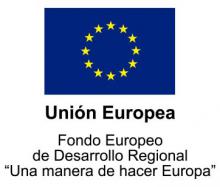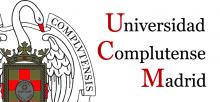ReVirTool

Project ReVirTool, with reference PSI2015-68851-P, es cofinanced by the Ministerio de Energía y Competitividad together with the Fondo Europeo de Desarrollo Regional (FEDER). Programa Estatal de I + D + i Orientada a los Retos de la Sociedad (Retos-Colaboración). Convocatoria 2015. Modalidad 1: Proyectos de I + D, del Programa Estatal de Fomento de la Investigación Científica y Técnica de Excelencia, Subprograma Estatal de Generación del Conocimiento.
Project based on the use of Virtual Reality for the treatment of patients with alcohol dependence.
Behavioral inhibition processes have a relevant/main role in alcohol dependance relapse. Thus, relapse preventing specific strategies should be included as part of the interventional techniques, in order to enhance behavioral and cognitive inhibition capacity/ability/success. One of the current designs to improve the behavioral control of these patients is represented by the alcohol Approach Avoidance Task (AAT), given by Wiers' group. However, this procedure could be more efficient if patients, before training in this task, were be exposed to a alcohol conditioned stimuli series (stimuli updating/retrieval), through virtual reality technology/designs/systems.This updating task (extinction training) opens a time-window/period immediately after, allowing memory trace consolidation. During this period, avoidance training could have a changing effect on the overlearned behavior, generated by alcohol cues (extinction).
RESULTS:
In this project, CeDInt has implemented a Virtual Reality tool that allows alcohol use disorder (AUD) patients to fulfill the treatment experiments for the stimuli updating phase and the training phase respectively. For the first, two different environments have been modeled based on the specific treatment group of the patient (“consumption” and “neutral):
- Consumption environment: it shows a virtual environment based in a tavern/bar with objects and furniture that we can find in real locations (e.g a bar, beer taps, tables, chairs, drinks, glasses cups and other elements of decoration that give realism). During the updating phase, the scene is free of people and the patient can navigate freely using a VR device (HMD helmet and controller) for a specific amount of time. At a given moment, the patient can interact with the television by pointing towards it with the controller. After this time, if no interaction has taken place, the video visualization is started automatically. During the visualization of the video, the patient remains in a “seated” point of view, and the movement is restricted to turning the head around the television.
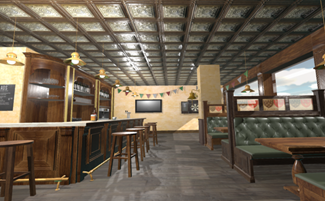
Figure 1. “Consumption” environment
- Neutral environment: this scene is based on a living room of an apartment, equipped with a sofa, chairs, shelves and cupboards. Besides, it is decorated with “neutral” objects as books, pictures, plants, etc. As well as the other environment, the patient can navigate freely for an amount of time and/or interact with the television to watch a neutral video from the point of view of the sofa
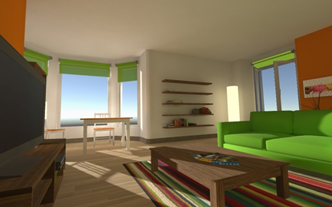
Figure 2. “Neutral” environment
As for the training phase, four parts or blocks have been specified that differ from each other in the context type used for the exercise. For each treatment session, the patient must perform the four blocks in any order, being the training exercise the same in all cases. The characteristics of the contexts are defined below:
- Positive Context: a spherical 360º image representing the environment of a bar with people sitting on the bar has been generated from the corresponding views of a 6-sided cube (see Figure 3). This image is used as "skybox" or background of the environment to increase the feeling of realism. During the exercise, the patient is seated in front of a virtual table where he / she must carry out the task of approaching / distancing. For this context, 40 trials have been specified (20 neutral objects and 20 alcohol objects).

Figure 3. Spherical image of a bar in the positive context
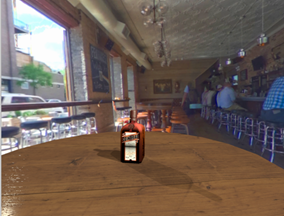
Figure 4. Training phase for the positive context
- Positive Context (update): this block is a revision of the previous one where the 360º image has been replaced by a complete virtual environment based on the update stimuli scenario. In turn, the base environment has been populated with avatars that are in the bar in a positive social attitude. More specifically, we can see two avatars talking and a waiter who is working behind the bar.
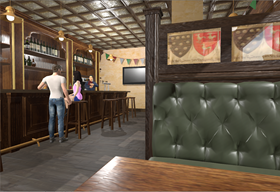
Figure 5. Training phase for the “positive context (updated)
- “No context”: this block is defined the same as the previous one except that no background image is used for the environment (see Figure 6). The number of tests defined in this case is 100 (50 neutral objects and 50 alcohol objects).
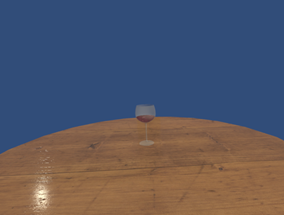
Figure 6. “No context” training phase
- Negative Context: the consumption scenario used during the update stimuli phase is taken as reference. However, elements are added to generate a feeling of rejection in the patient who performs the training exercise. These are mainly greater presence of alcoholic beverages, shot glasses, dirt, poor lighting and an avatar representing a drinker at the bar. The number of tests carried out is 40 (20 neutral objects and 20 alcohol objects).
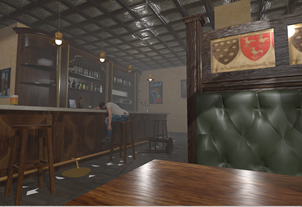
Figure 7. Training phase for the negative context
- Neutral context: the neutral scenario used during the updating stimuli phase is taken as reference. The patient is seated at a table in the room where he performs the training exercise. In this case, 20 tests are defined (10 neutral objects and 10 alcohol objects).
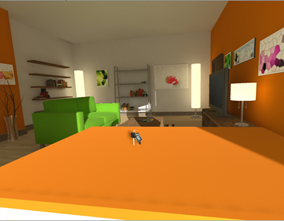
Figure 8. Training phase for the neutral context
The training exercise for the four contexts simulates the pull / push task in which, for each completed test, the patient must choose to perform a pull gesture for neutral objects or push away gesture using the VR controller.
In addition, a practice context that serves as a tutorial to familiarize with the interaction of the controller and the approach / deviation exercise has been included. In this scenario, the user is randomly presented with green cubes that must accept and red spheres that must be rejected. When failing one gesture, the task is repeated and the patient is notified of the failure. The results obtained are not registered by the application since the objective is to train the patient in the technique he /she will use to perform the exercises.
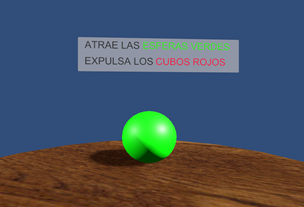
Figure 9. Practice context for the pull / push exercise


